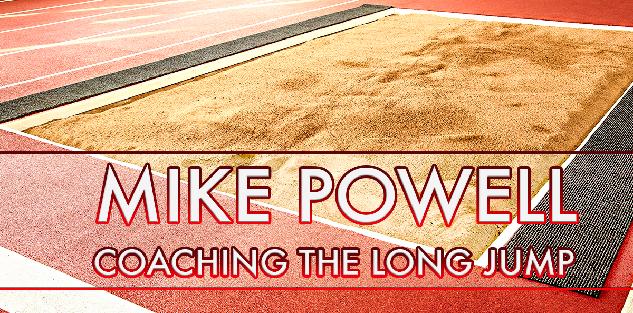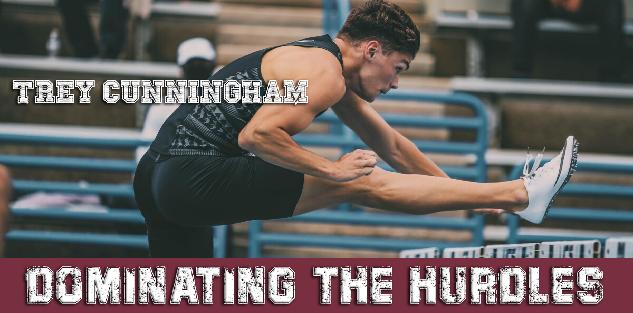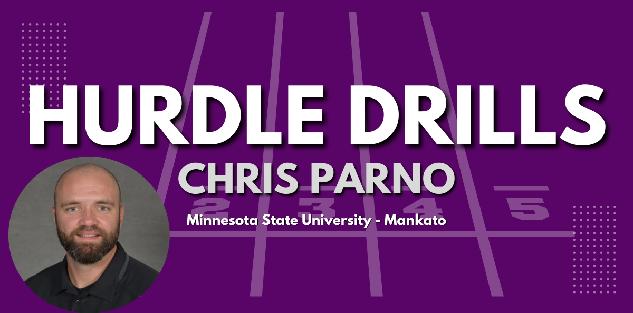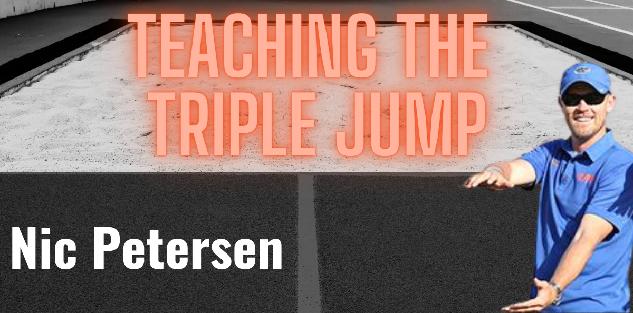Featured courses
- The Ultimate Guide to Coaching Track and Field by Jackson Chlebowy
- How TCU Coach Khadevis Robinson Builds Mental Toughness for Big 12 Track by William Markey
- Two Points of Focus When Coaching and Training Hurdles by Grant Young
- Four Keys to Maximize Winning Potential in a 400m Race by Grant Young
- Three Lessons Every Distance Running Coach Should Know by Grant Young
- Olympic Medalist Jasmine Moore’s Triple Jump Approach Technique Keys by Grant Young
- Build Strong Triple Jump Foundations with 3 Key Drills by William Markey
- Two Cues to Help With Track and Field Relay Handoffs by Grant Young
- Four Shot Put Drills to Help Develop Your Athletes by Grant Young
- Three Training Tips For Coaching 400m Runners by Grant Young
- Four Tips for Teaching the Javelin Throw by Grant Young
- 3 Pole Vault Check Points From Legendary Kansas Coach Tom Hays by Grant Young
- Two Valuable Hammer Throw Training Tips by Grant Young
- 3 Must-Try Offseason Shot Put Drills by William Markey
- Four Essential Tips For Coaching Track Relays and Sprints by Grant Young
- Florida Gators Coach Nic Petersen’s Two Keys for Teaching the Triple Jump by Grant Young
- Three Effective Drills for Improving the Long Jump by Grant Young
- Three Drills for Sprinters That Track Coaches Swear By by Grant Young
- Four Pole Vault Drills All Track and Field Coaches Should Know by Grant Young
- Explosive Track and Field Training to Level Up This Summer by Tyler Rathke
- Throwing Secrets: The Entry by Tyler Rathke
- How to Find an Endurance Athlete’s Proper Training Pace by Grant Young
- The Technique Behind Mykolas Alekna’s Discus World Record by Grant Young
- How to Build a Sprinter's Training Regimen by Grant Young
- How to Teach the Glide Shot Put by Grant Young
- Three Hurdle Drills All Track Coaches Should Know by Grant Young
- How Distance Running Coaches Can Get the Most Out of Their Athletes by Grant Young
- The Technique Behind Mondo Duplantis' Pole Vault World Record by Grant Young
- How to Coach Weightlifting For Increased Speed and Acceleration by Grant Young

Three Drills for Sprinters That Track Coaches Swear By
- By Grant Young
Effective track and field sprint drills are absolutely essential for teaching young athletes, and here's why track coaches must prioritize finding the right ones for their team.
The most obvious reason is that drills are fundamental for instilling proper technique, which is critical for maximizing speed and efficiency. Sprinting mechanics involve intricate movements, and regular practice through focused drills helps athletes refine their form. This not only enhances performance but also significantly lowers the risk of injuries.
Another reason is that drills play a vital role in developing muscle memory. Through consistent repetition of specific movements, sprinters strengthen the coordination necessary for explosive starts and powerful finishes. This muscle memory allows for faster, instinctive reactions during races, often making the difference between victory and defeat.
And one less discussed aspect of utilizing drills when teaching sprinters is how they can help maintain motivation and engagement. Introducing variety through creative and challenging practices not only makes training more enjoyable but also fosters team spirit and camaraderie among sprinters. This supportive atmosphere can lead to enhanced collective performance.
Track coaches must recognize that effective drills are vital for cultivating the key ingredients for a sprinter's success on the track, and prioritizing these drills paves the way for athletes to reach their full potential and achieve greatness.
But it can be difficult to know which drills to prioritize. This is why we’ve pulled three drills from world-class sprinting coaches, which have helped them develop elite sprinters and can help do the same for you.
Kebba Tolbert - Wickets Drill
Kebba Tolbert is in his 14th season as the women’s sprints/hurdles and horizontal jumps coach for Harvard in 2024-25 and 13th as associate head coach of the squad.
Coach Tolbert lifted Crimson student-athletes to incredible heights during the 2023-24 season. At the 2024 NCAA Outdoor Championships, Coach Tolbert guided two Crimson to All-America Second Team honors, as Victoria Bossong placed in the top-10 in the 800m, while Chloe Fair finished in 11th in the 400m hurdles.
In Coach Tolbert’s ‘Training Design for Sprinters - Kebba Tolbert Harvard’ course, he discusses what he calls a wickets drill that he loves having all of his sprinters do on a weekly basis.
The drill begins with the coach setting up about 20 tickets, starting with them being about two feet apart but getting gradually more spaced apart. The sprinter starts by taking about four or five high-knees steps in order to build momentum then accelerates through the wickets, getting into their sprinting posture. Once they pass all of the wickets then they keep their same sprint speed for a few steps before decelerating.
The key component here is to ensure that the sprinter keeps their knees churning from the beginning to the end of the drill. They might have a tendency to look down and ensure that they’re not going to stop on the wickets, so coaches will want to ensure that the sprinter is looking forward and keeping a straight posture throughout the drill.
Chris Parno - 1,000 Step Drill
Chris Parno enters his 12th season as the Associate Head Track and Field Coach at Minnesota State University in 2024-25. Parno leads the men's and women's sprint/hurdle groups and serves as the recruiting coordinator.
While being led by Coach Parno, the maverick sprinters and hurdlers have experienced unprecedented success, rewriting the record books and establishing MSU as a sprints and hurdles powerhouse among Division II. On top of his coaching duties at Minnesota State, Coach Parno serves as a USATF lead instructor for the Level 1 coaching certification programs, while also instructing for the Level 2 and 3 certification programs.
Coach Parno’s ‘Sprint Drills - Chris Parno’ course details what he calls a 1,000 steps drill, which is essentially a banded a-run drill.
It begins with an athlete in a sprinting position with a thick elastic band wrapped around their waist. A coach or other athlete will be a few feet behind them, holding the band with both hands. When the drill begins, the sprinter will accelerate forward while executing high knees, as the person behind them provides resistance with the band.
The goal of this drill is for the athlete to get in as many steps as possible without necessarily pulling against the band. Instead, their aim should be to keep their sprinting form while the band forces them to keep driving their legs down into the track.
Ajamu Olaniyan - Plank Starts Drill
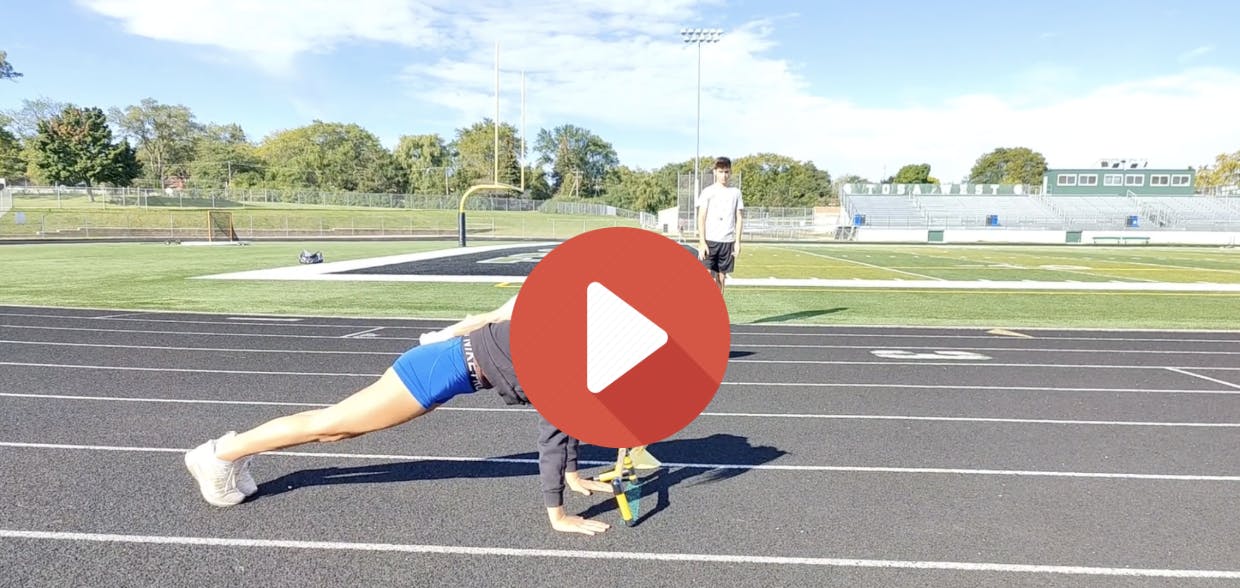
Ajamu Olaniyan is a three-time National Champion and a seven-time All-American in the triple jump. His collegiate achievements include being in the top five all-time nationally and never being ranked lower than second in the country for five years in the triple jump.
During his noteworthy coaching career, Coach Olaniyan has worked with numerous state qualifiers and athletes who have competed at the collegiate level. He continues to coach at the college and high school level and conducts clinics and camps in the Midwest.
Coach Olaniyan’s ‘Drills to Improve Sprint Performance’ course details his plank starts drill, which starts with the athlete in a plank position. From there, they will get into their set (start) position before their coach says go and they simulate getting off the block and the first few steps of their sprint.
Coach Olaniyan likes starting his athletes in a plank position because it forces them to accelerate forward before standing straight up, which is a common tendency for many.
Using mechanic-focused drills like these is a great way to instill positive habits into runners, especially when getting off the blocks.

